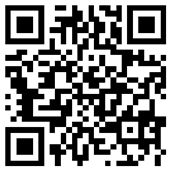Hotline
0577-62696279
 24H Hotline:0577-62696279
24H Hotline:0577-62696279
In the past two years, the new energy vehicle's connector and wiring harness market is very good.
The connector market also has many friends involved, because it is the tuyere.
So everyone flocked to it. In fact, many people do not understand connector industry at all.
The connector industry is very large, and there are many kinds of connectors, for example, there are connectors inside the IT host.
Main engine peripheral connector (I/O), equipment connector, mobile phone connector, industrial connector.
Automotive connectors, new energy connectors, etc. By communicating with connectors'predecessors and collecting relevant market information.
Come with you to understand the underlying connector.
Section 1: basic knowledge of connectors
Connectors are part of our electronic engineering and technical personnel frequently contacted; its role is very simple:
Bridges of communication are erected between circuits that are blocked or isolated so that current flows.
Enable the circuit to achieve predetermined functions. Connector is an indispensable part of electronic equipment. It is observed along the path of current flow.
You will always find one or more connectors. The form and structure of connectors are ever-changing.
Power, application environment and so on, there are various forms of connectors; for example,
Connectors for lighting on the court are very different from hard drive connectors and rocket-igniting connectors.
But no matter what kind of connector, ensure that the current flows smoothly and continuously and reliably.
The second section: why use connectors
Imagine what would happen if there were no connectors. A continuous conductor must be used between the circuits.
Connect permanently, for example, an electronic device is connected to a power supply.
It is necessary to connect the two ends of the connecting wire with the electronic device and the power supply through some way (for example, welding).
Fixed connection, which brings inconvenience to production and use.
Take automobile battery as an example; assume that the battery cable is fixed and welded to the battery.
Automobile manufacturers add workload, production time and cost to install batteries; when batteries are damaged, they have to send the car to a repair station, remove the old ones, and weld the new ones, so they have to pay more labor costs; with a connector, they can get rid of a lot of trouble, buy a new one from the store and break it. Open the connector, remove the old battery, install the new battery, and reconnect the connector.
It makes the design and production process more convenient and flexible, and reduces the cost of production and maintenance.
The third section: connector structure:
The connector seat has the following functions:
Support the contact part (pins, reeds, etc.) firmly and correctly.
It is dust-proof, antifouling and moistureproof, protects contact parts and conductors.
To isolate the circuit from each other.
A connector mounted on a printed circuit board is called a header or wafer. The main difference between the base and the base is that the base is always mounted with the circuit pins, and the base is only an empty shell. There are two forms of the pedestal: covered and UN covered. Shield refers to the connector pin and socket, in the intersection of parts around the seat or skirt made of protective cover. The base also has a friction lock style, which is a partially covered base but has a locking device that combines the base with the base.
Contact part (Contacts):
The contact part of the connector connects the two parts of conductor (or conductor) to be connected. After integration, the circuit is switched on and the current flows through the connector. There are two main types of contacts: terminals (terminal) and pins (PIN). The specific shape of objects is varied. The legend of both is shown below. The terminals (or pins) have two ends: the front end and the rear end. The front end is always the joint end, which forms a contact with the other end. The backend always acts as an end connector, or a crimping or connecting conductor (conductor).
The fourth section: connector electrical properties:
The main electrical properties of the connector include contact resistance, insulation resistance and electrical resistance.
Contact resistance: high quality electrical connectors should have low and stable contact resistance. The contact resistance of connectors varies from several milliohms to tens of milliohms.
Insulation resistance: Indicator of insulation performance between contacts and between contacts and shells of electrical connectors, ranging in magnitude from hundreds to thousands of megaohms.
Electrical strength, or resistance to voltage or dielectric voltage, is the ability to withstand rated test voltage between contacts of connectors or between contacts and housing.
Other electrical properties?
Electromagnetic interference leakage attenuation is to evaluate the shielding effect of electromagnetic interference of connectors. Electromagnetic interference leakage attenuation is to evaluate the shielding effect of electromagnetic interference of connectors.
For RF coaxial connectors, there are characteristic impedance, insertion loss and reflection coefficient.
Voltage in Bobbi (VSWR) and other electrical indicators. Thanks to the development of digital technology,
In order to connect and transmit high-speed digital pulse signals,
A new type of connector, i.e. high-speed signal connector, has emerged. Accordingly, in terms of electrical performance, in addition to characteristic impedance,
Some new electrical indicators, such as crosstalk, delay and skew, have also appeared.
The fifth section; physical properties of connectors:
Common environmental properties include low temperature, constant humidity, alternating humidity, and salt.

浙公网安备 33038202002710号

WeChat public


Mobile website
